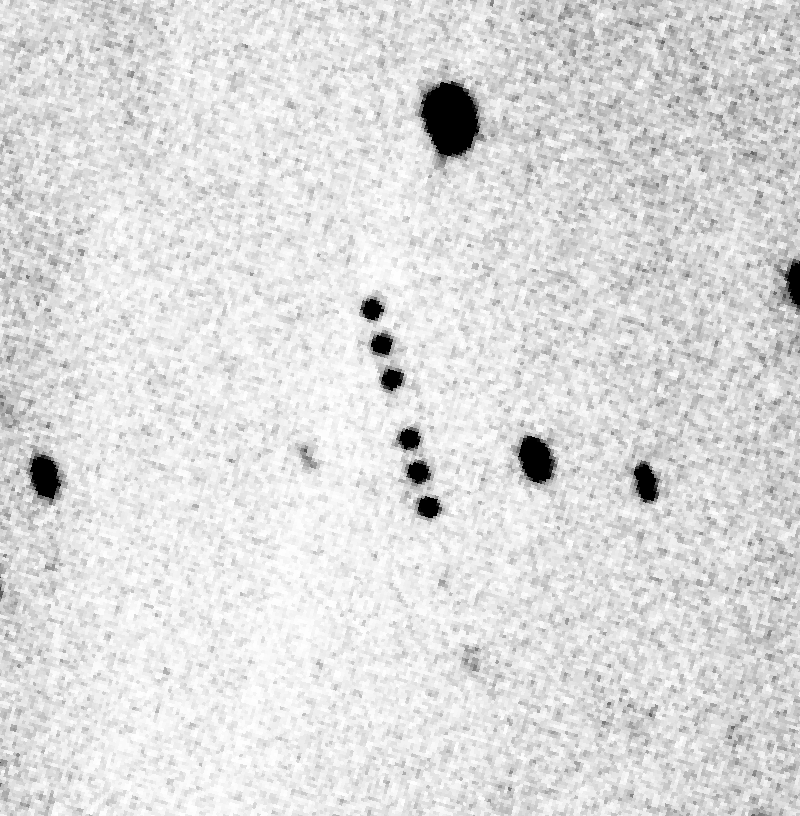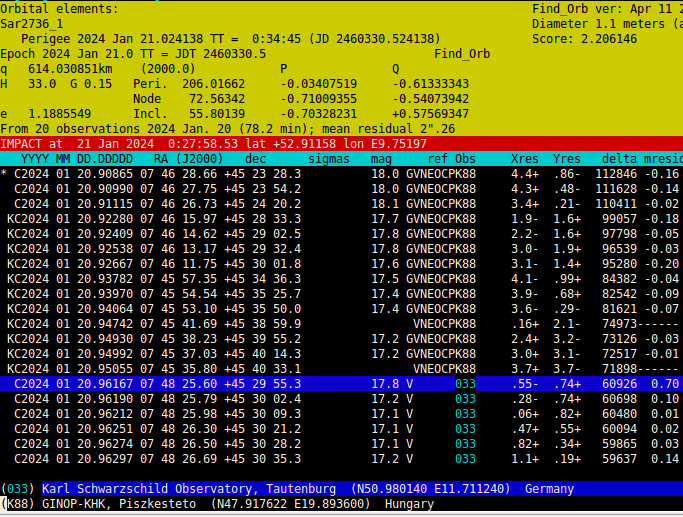The time around the full moon is actually not suitable for astrophotography. Nevertheless, the night of January 20th to 21st, 2024 had a surprise in store for Dr. Stanislav Melnikov and his colleagues. He carried out observations for the ``Near-Earth Asteroid program´´. The sky was already so bright that faint asteroids were barely visible. Thus, the researcher was pleased when a new object named Sar2736 suddenly appeared on the target list. Its brightness and speed suggested it was close to Earth. Dr. Bringfried Stecklum, who followed the measurements via the Internet and processed the images, advised him to quickly observe the object. However, the first attempt at around 11:30 p.m. failed. The replacement camera, which had to be used since TAUKAM was under repair, did not capture the asteroid with its smaller field of view. A little later more precise coordinates arrived and Dr. Melnikov tried again. This time he took six images, which were immediately evaluated (Fig. 1). An orbit is routinely calculated from the determined positions and those already known in order to detect false identifications and other problems. Dr. Stecklum became speechless when the FindOrb program used for this purpose predicted that the asteroid would hit Earth in about an hour (Fig. 2). In addition, the coordinates of the impact site suggested that this would happen in the northern central part of Germany. Normally, this would be a cause for concern, but in this case there was no reason for it. Using the typical reflectivity of asteroids and the measured brightness, FindOrb calculated a diameter of about one meter. For such a small object, part of the mass would burn up when it entered the atmosphere, and the rest would burst. Therefore, there was no danger. A third attempt to photograph Sar2736 with the TLS telescope was unsuccessful - the object was now traveling too fast. A little later there were first reports of the spectacular light phenomenon of a bolide or fireball that fell west of Berlin near Nennhausen (Havelland).
A total of 14 stations reported positions to the Minor Planet Center (MPC), which gave the object the official name 2024 BX1. The TLS was third in the order. 2024 BX1 is the eighth asteroid discovered within 24 hours of its impact. Its discoverer, Krisztián Sárneczky, from the Konkoly Observatory, had already identified two. Various search parties have now managed to find fragments of the asteroid (meteorites) (MAZ). These suggest that 2024 BX1 was not a primitive asteroid, but came from a body whose internal structure is similar to that of Earth. It may have split off from Vesta, the largest asteroid in the solar system. The rare finds promise valuable information about the history of the formation of the solar system.
|
Fig. 1: Superposition of the six TLS images. The telescope tracked the asteroid, therefore the stellar images are elongated. |
Fig. 2: Results of FindOrb, based on the discoverer positions (K88) and those of TLS (033). Impact time and coordinates were highlighted red. The size estimate is at the upper right. |



